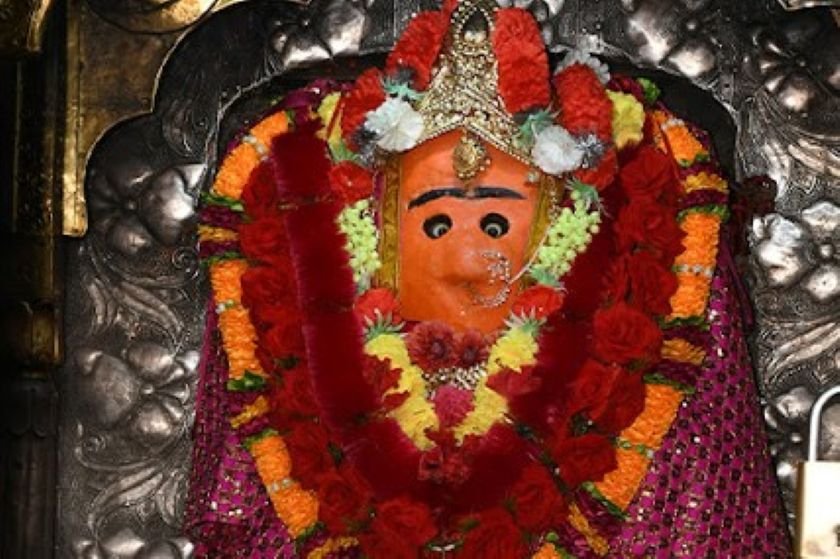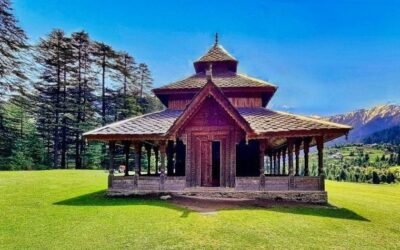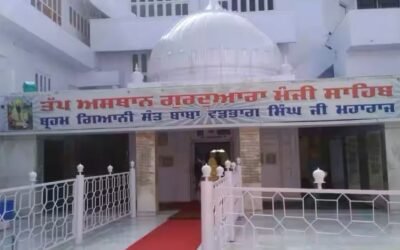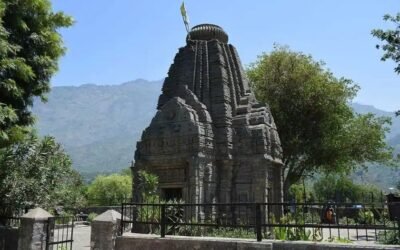Where the goddess roars through the Baner River, and vows find their voice in stone
Set against the dramatic backdrop of the Dhauladhar range, on the banks of the Baner River, the Chamunda Devi Temple—also known as Chamunda Nandikeshwar Dham—is one of the most powerful Shaktipeeths in Himachal Pradesh. Located in Padar village, about 19 km from Palampur, this temple is dedicated to Chamunda Devi, a fierce form of Durga, and is believed to be the spot where Sati’s forehead (mastak) fell.
🌄 Location & Accessibility
- Location: Padar, near Palampur, Kangra District, Himachal Pradesh – 176052
- Altitude: ~1,000 meters
- By Road: 19 km from Palampur, 15 km from Dharamshala; well-connected by buses and taxis
- By Rail: Kangra Mandir Station (~3 km), Pathankot Junction (~85 km)
- By Air: Gaggal Airport (~11 km)
- On Foot: Easily accessible from the main road; wheelchair-friendly paths available
🕉️ Deity & Worship
The temple enshrines Chamunda Devi, depicted in her wrathful form, adorned with serpents, a skull garland, and weapons, symbolizing her power to destroy evil and protect the righteous.
- The idol is hidden behind a red cloth, revealed only during special rituals
- Nandikeshwar Mahadev, a form of Shiva, is also worshipped in the same complex
- Devotees offer red cloth, coconuts, ghee lamps, and perform ancestral rituals at the temple’s sacred pond (kund)
It is believed that every sincere vow made here manifests, making it a powerful site for wish fulfillment and spiritual cleansing.
🏛️ Architecture & Setting
The temple blends traditional Himachali and North Indian styles, featuring:
- A fort-like stone structure with silver-plated doors and carved wooden panels
- A peaceful meditation hall, where devotees can sit in silence
- A sacred kund (pond) for ritual bathing and ancestral offerings
- A cave-like shrine resembling a Shiva lingam, adding to the temple’s mystique
The Baner River flows beside the temple, and the Dhauladhars rise like guardians, creating a setting that is both awe-inspiring and deeply meditative.
📜 Mythological & Cultural Significance
- This temple is one of the 51 Shaktipeeths, where Sati’s forehead is believed to have fallen
- The current structure was built in the 16th century, after a king and priest received a divine vision directing them to relocate the idol from the inaccessible Aadi Himani Chamunda shrine atop the hills
- The temple is also associated with Dhayanu Bhagat, who offered his head to prove the goddess’s power during Akbar’s reign
🎉 Festivals & Celebrations
- Navratri (Spring & Autumn): Celebrated with devta processions, night-long bhajans, and community feasts
- Kali Puja & Dussehra: Marked by special aartis and offerings
- Daily Worship: Morning and evening aartis, Durga Saptashati recitations, and lighting of ghee lamps
🏞️ Nearby Attractions
- Aadi Himani Chamunda Temple: The original hilltop shrine, accessible via a challenging trek
- Baijnath Temple: A 13th-century Shiva temple with exquisite stone carvings
- Kangra Fort: One of India’s oldest forts, steeped in history
- Palampur Tea Gardens & Bir Billing: For nature lovers and paragliding enthusiasts
🙏 Spiritual Experience
The Chamunda Devi Temple of Padar is not just a shrine—it is a roaring hymn of protection and power, a place where Durga’s wrath becomes a mother’s embrace, and the river carries your prayers like thunder through the valley. As you bow before her sanctum, with the Dhauladhars watching and the wind whispering mantras, you feel the presence of a goddess who destroys fear and grants strength. It is a temple where faith is fierce, and the **soul finds its roar in the silence of stone.




